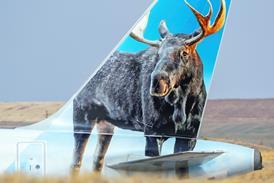The National Research Council Canada Institute for Aerospace Research will announce today a significant advance in icing research.
The Ottawa, Ontario-based establishment has developed an isokinetic probe that can measure total water content when flying at altitude through clouds with ice crystals.
"This probe is the only fully functioning device of its kind in the world and represents a significant step forward in the effort to characterise and fully understand the total water content present in clouds with ice crystal conditions," says NRC.
Since the 1950s, ice crystal conditions have been identified as a potential problem for aircraft, but there has been no real understanding of this phenomenon occurring at high altitudes, it continues.
The NRC-designed and built probe samples clouds isokinetically and employs an evaporator that ensures an accurate total water content reading. Researchers have tested the probe extensively under simulated flight conditions that included ice crystals in the range of 70 to 270 microns in concentrations up to 15g per cubic metre. Total water content readings are proving accurate. Flight testing of the probe in ice crystal conditions is planned for 2011.
NRC will also announce today that it has added a new high-altitude atmospheric research capability to its Flight Research Laboratory in Ottawa. Integrated with the NRC T-33 vintage military jet trainer, HAARC will allow NRC researchers and collaborators to study turbulence and aircraft emissions at altitudes up to 40,000ft (12,200m).
Simultaneously NRC has appointed Calgary-based Eagle Copters to replace the engines in its Bell 412HP advanced systems research aircraft with the Pratt & Whitney PT6T-9 Twin-Pac. The replacement engines have digital engine control instead of a manual engine governor, providing "more carefree" operation of the aircraft near engine and torque limits, it says.
- All the latest news, video and images from the 2010 Farnborough air show - New this year, live streaming video of each day's flying display
Source: Flight Daily News




















